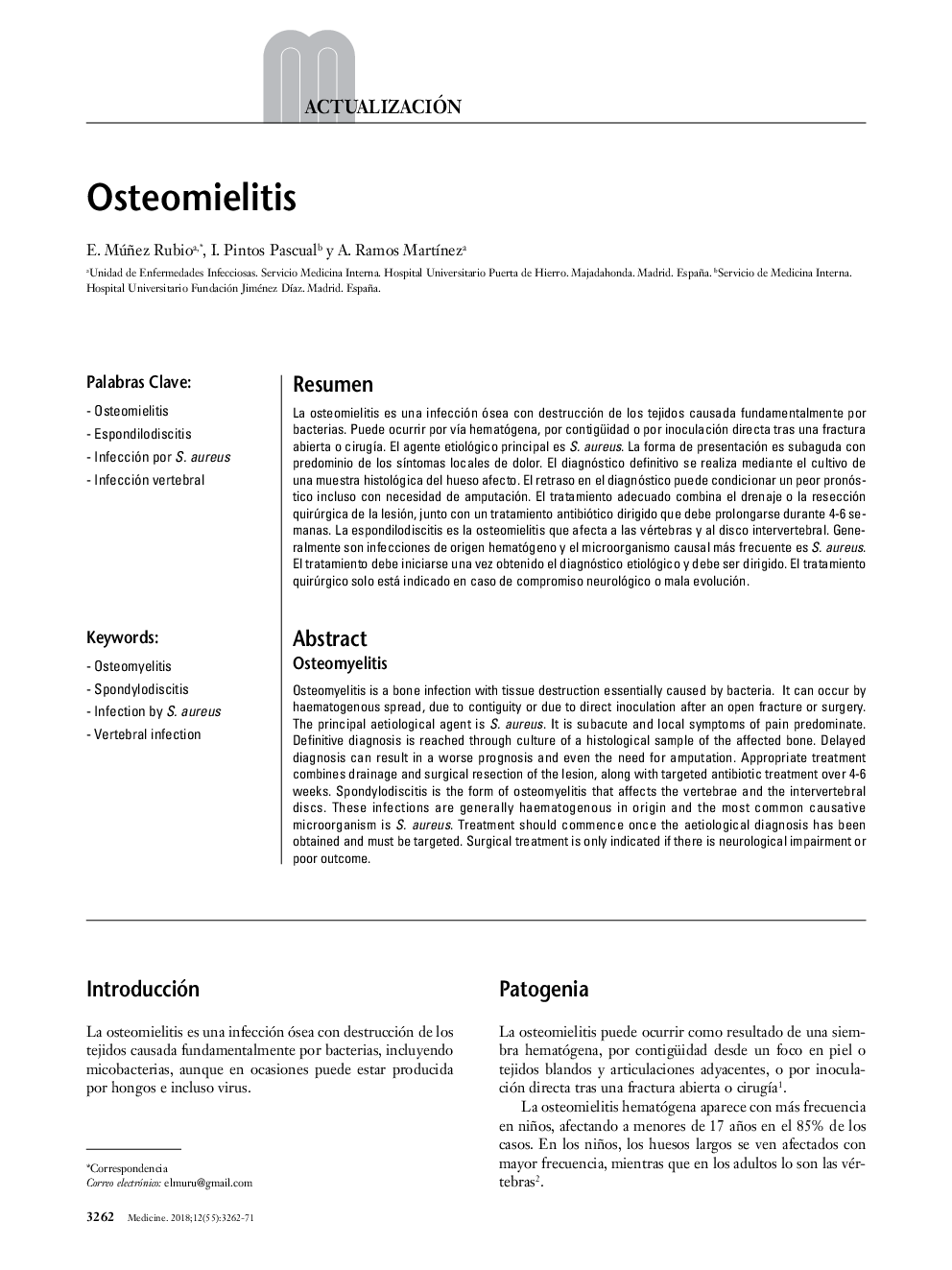| Article ID | Journal | Published Year | Pages | File Type |
|---|---|---|---|---|
| 8764255 | Medicine - Programa de Formación Médica Continuada Acreditado | 2018 | 10 Pages |
Abstract
Osteomyelitis is a bone infection with tissue destruction essentially caused by bacteria. It can occur by haematogenous spread, due to contiguity or due to direct inoculation after an open fracture or surgery. The principal aetiological agent is S. aureus. It is subacute and local symptoms of pain predominate. Definitive diagnosis is reached through culture of a histological sample of the affected bone. Delayed diagnosis can result in a worse prognosis and even the need for amputation. Appropriate treatment combines drainage and surgical resection of the lesion, along with targeted antibiotic treatment over 4-6 weeks. Spondylodiscitis is the form of osteomyelitis that affects the vertebrae and the intervertebral discs. These infections are generally haematogenous in origin and the most common causative microorganism is S. aureus. Treatment should commence once the aetiological diagnosis has been obtained and must be targeted. Surgical treatment is only indicated if there is neurological impairment or poor outcome.
Related Topics
Health Sciences
Medicine and Dentistry
Medicine and Dentistry (General)
Authors
E. Múñez Rubio, I. Pintos Pascual, A. Ramos MartÃnez,
